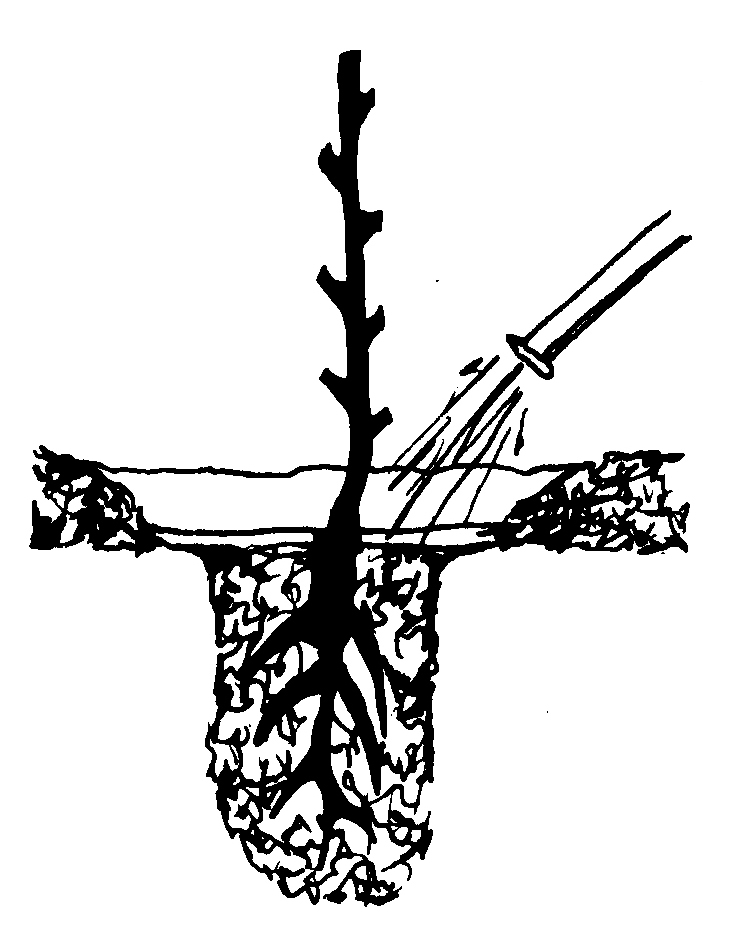Transplanting Pecan Trees
Proper transplanting technique is critical to ensuring the survival of transplanted bare-root pecan trees. The trees should be vigorous and free of pests. If the roots are dry when the trees arrive, reject the shipment and notify the nursery immediately.
Ideally, the trees should be transplanted as soon as possible after arrival. If weather conditions make this impossible, “heel in” the trees by covering their roots with moist soil or sawdust until planting.

Before planting, cut off all broken or damaged roots with sharp shears or a knife. Most new roots develop on side roots and within a foot from the tap root. The tap root may also be pruned, as it will regrow, but do not cut it shorter than about 18 inches. Examine the roots closely to ensure they are free of serious diseases or insects.

Prune back the top by one-half to one-third of the tree. Remember, the roots will be under stress as they reestablish themselves during the first year after transplanting and will be unable to support a large top. If the tree has light branching or no branching, cut back one-third to one-half of the main trunk.

Dig a hole just wide enough and deep enough for the tree’s root system without bending any of the roots. A power-driven auger, 12–18 inches in diameter, is an effective implement for digging tree-planting holes, especially when planning a large orchard.

Set the tree at the same depth at which it grew in the nursery. Arrange the roots in their natural position. Fill the holes about three-fourths full with friable top soil. Work the soil around the roots to remove air pockets. Pour water into the hole to settle the soil, which will further reduce air pockets and keep the roots moist.

Finish filling the hole with loose, unpacked topsoil on the surface to allow for easy penetration of water from rain or irrigation. Leave a basin-shaped indentation around the trunk to facilitate the watering of the trees.

Young trees will need supplemental water during the first year after transplanting, as the functioning root system is limited during this time.

Weed Control in Young Orchards
Weeds will deprive trees of moisture and nutrients in the year after transplanting. One method of controlling weeds is to use plastic or a weed barrier. Another method is to mulch around the trunks of the trees. An alternative method involves using tree protectors (also called tree guards or tree shelters). Once properly placed around the tree, these can allow for herbicide applications to eliminate weeds.
Care of Trees After Transplanting
Trunks of newly transplanted trees can be wrapped or painted white to prevent sunscald and damage from wood-boring insects if this is a concern. Burlap, heavy paper, or aluminum foil may be used to provide protection. The wrap should be left on only until the top growth provides shade for the trunk and should then be removed.

Publication 3847 (POD-12-24)
Revised by Eric Stafne, PhD, Extension/Research Professor, Coastal Research and Extension Center. Written by Richard Mullenax, PhD, former Extension Horticulturist.
The Mississippi State University Extension Service is working to ensure all web content is accessible to all users. If you need assistance accessing any of our content, please email the webteam or call 662-325-2262.


